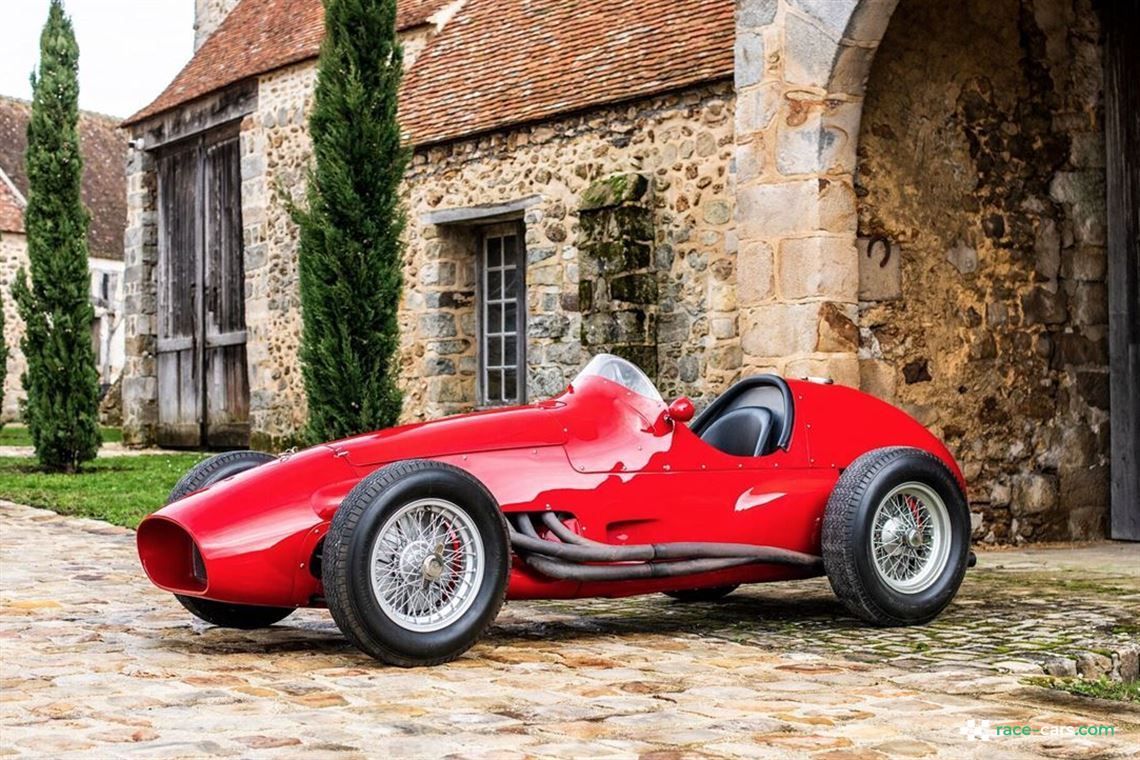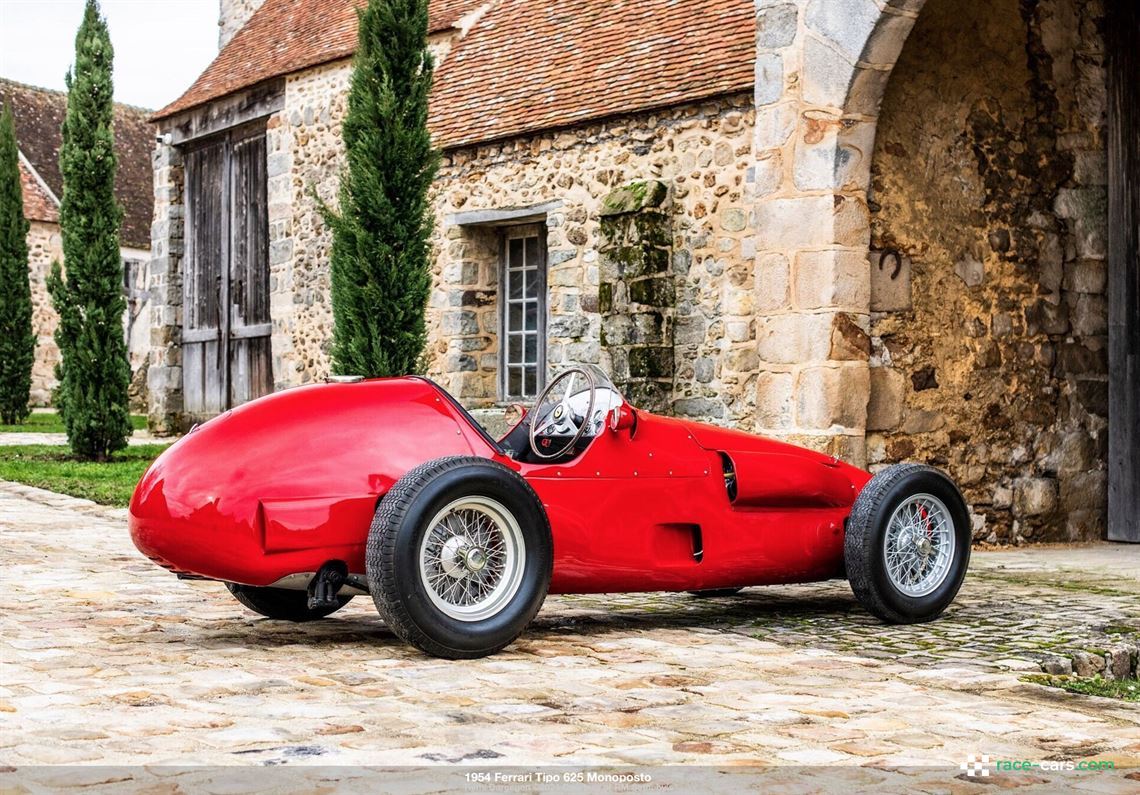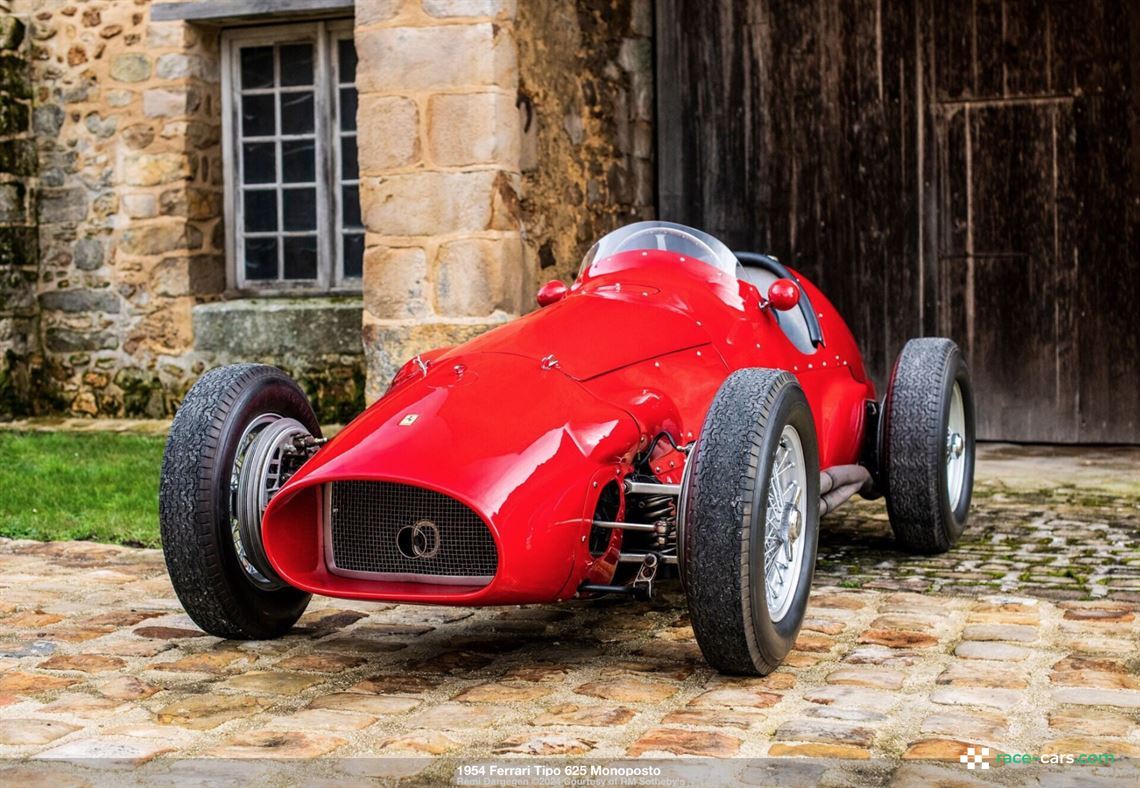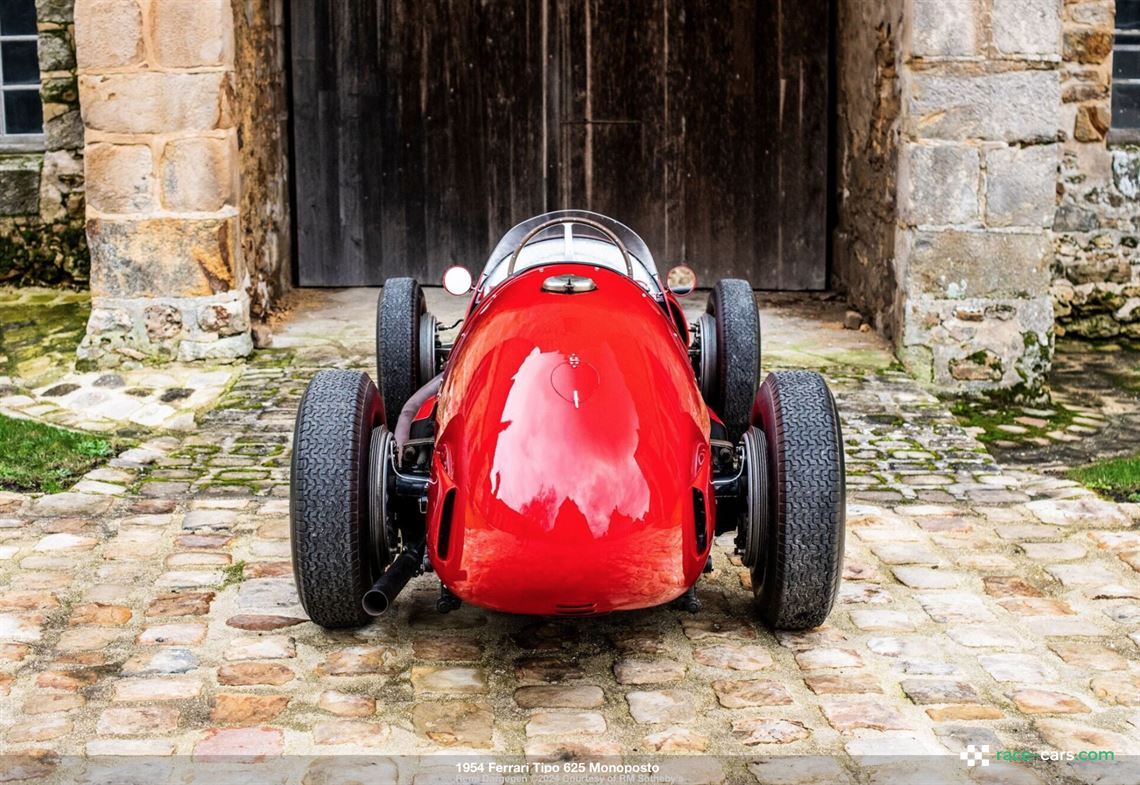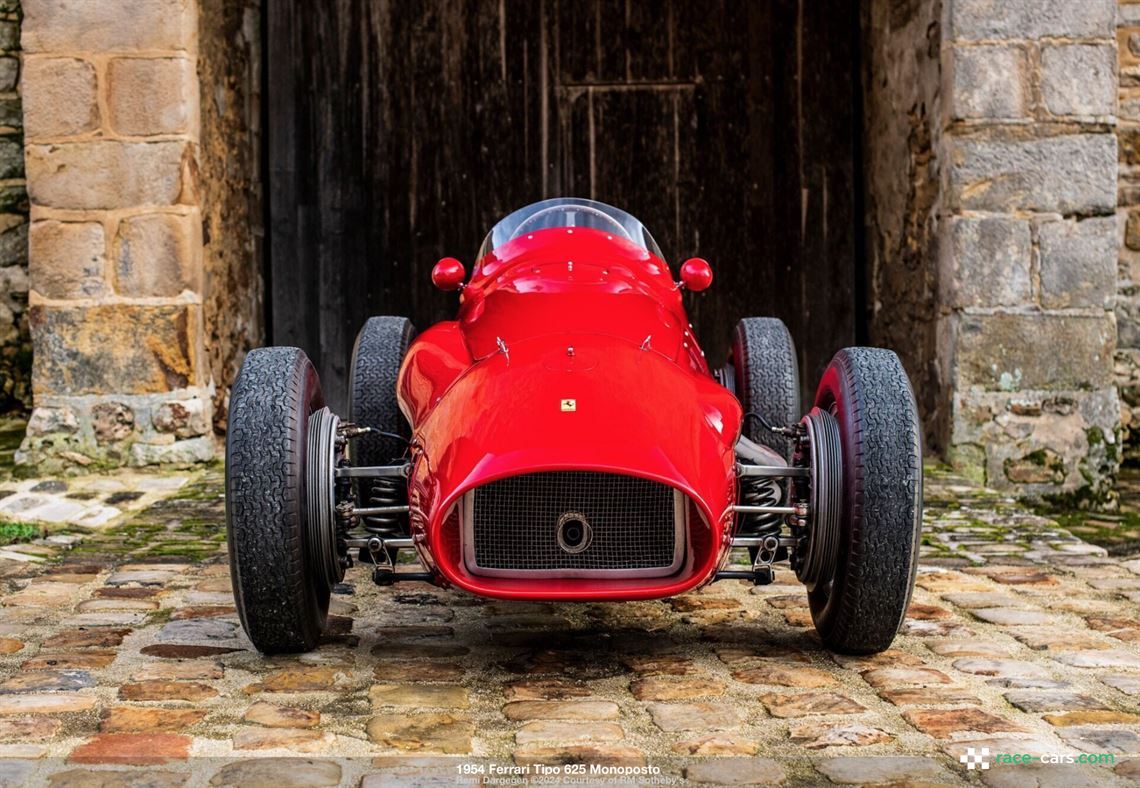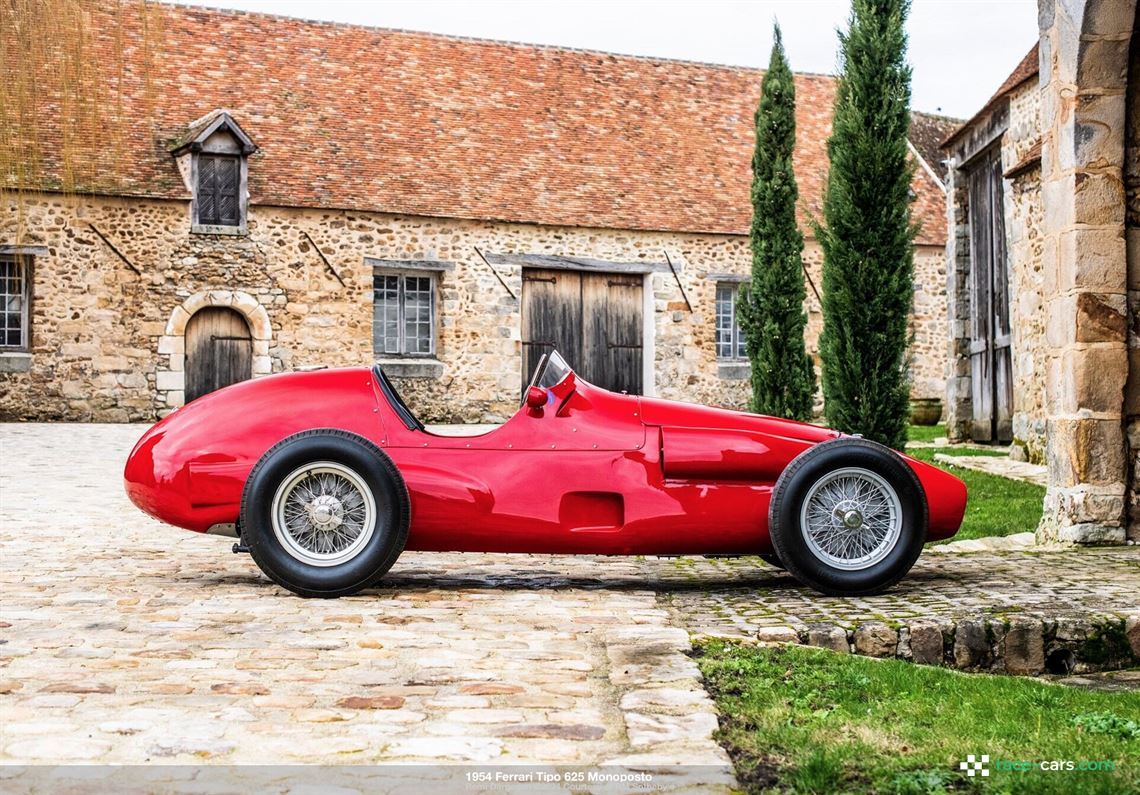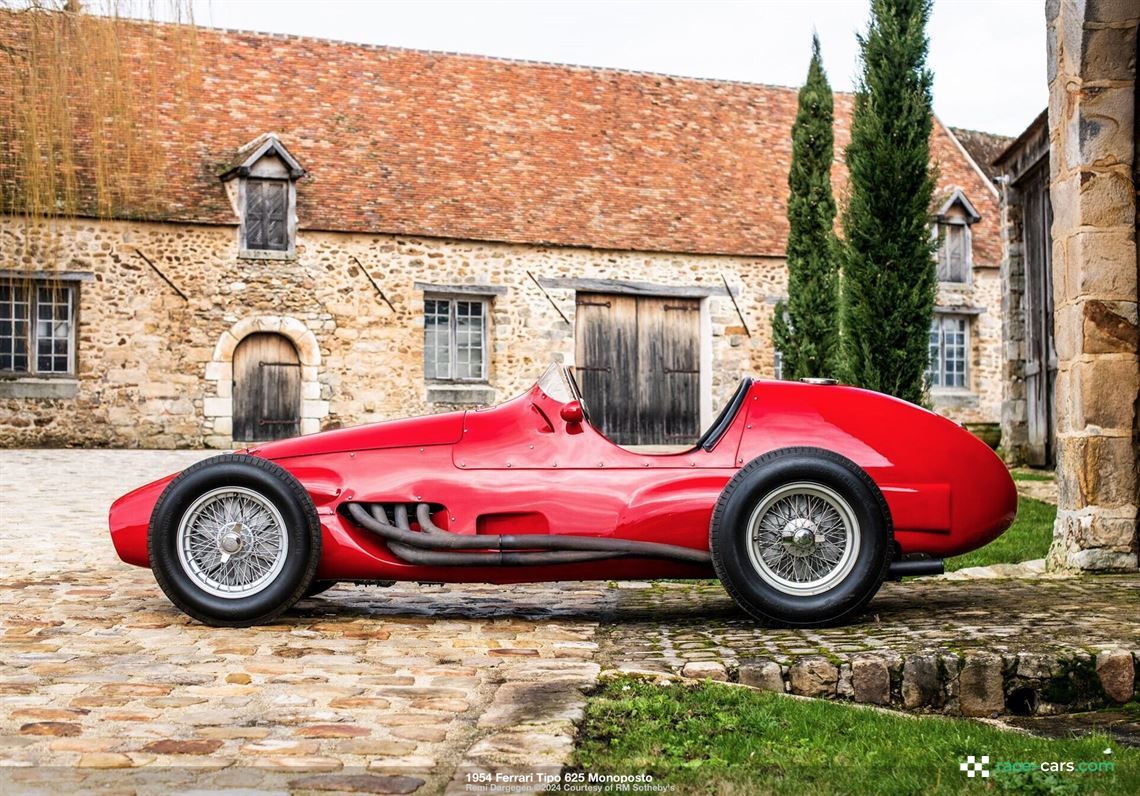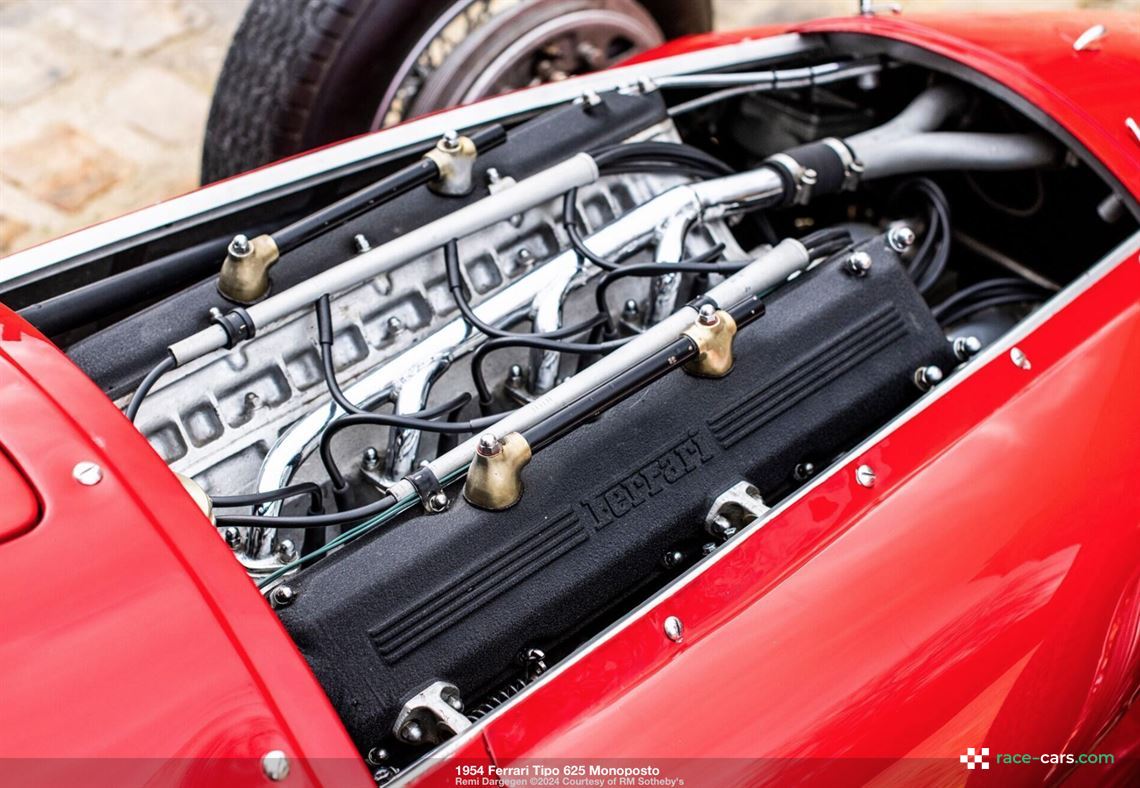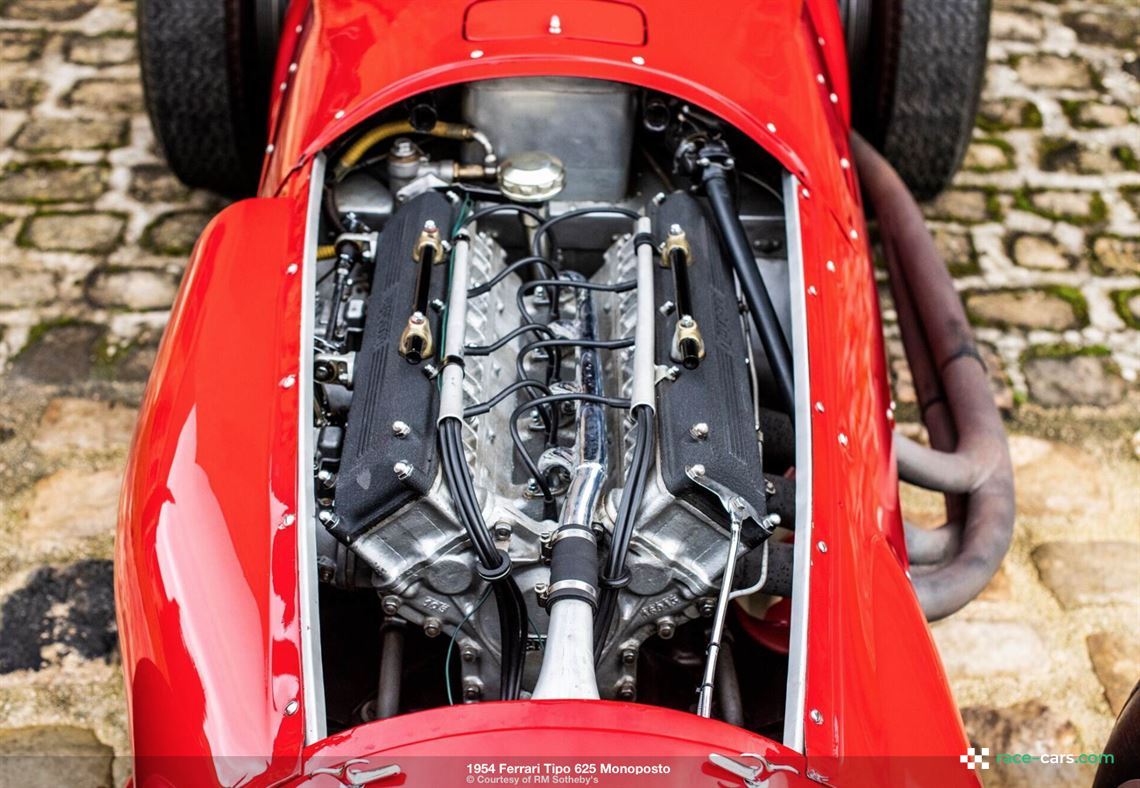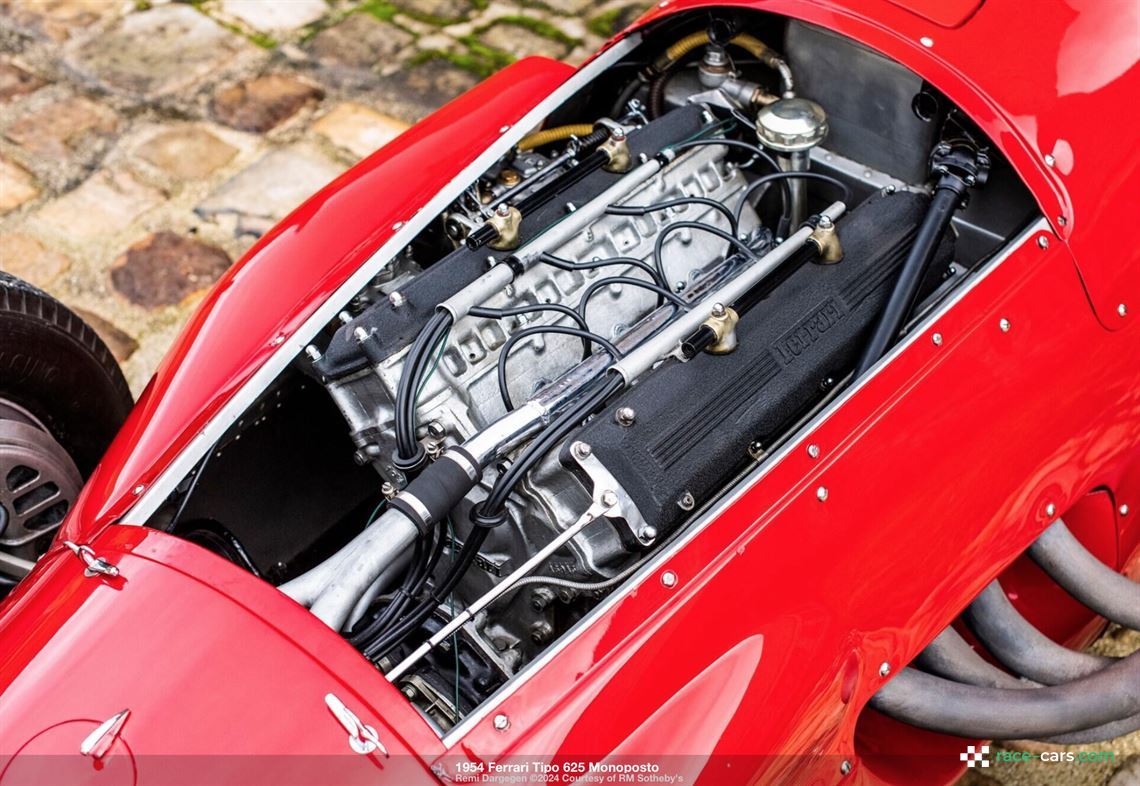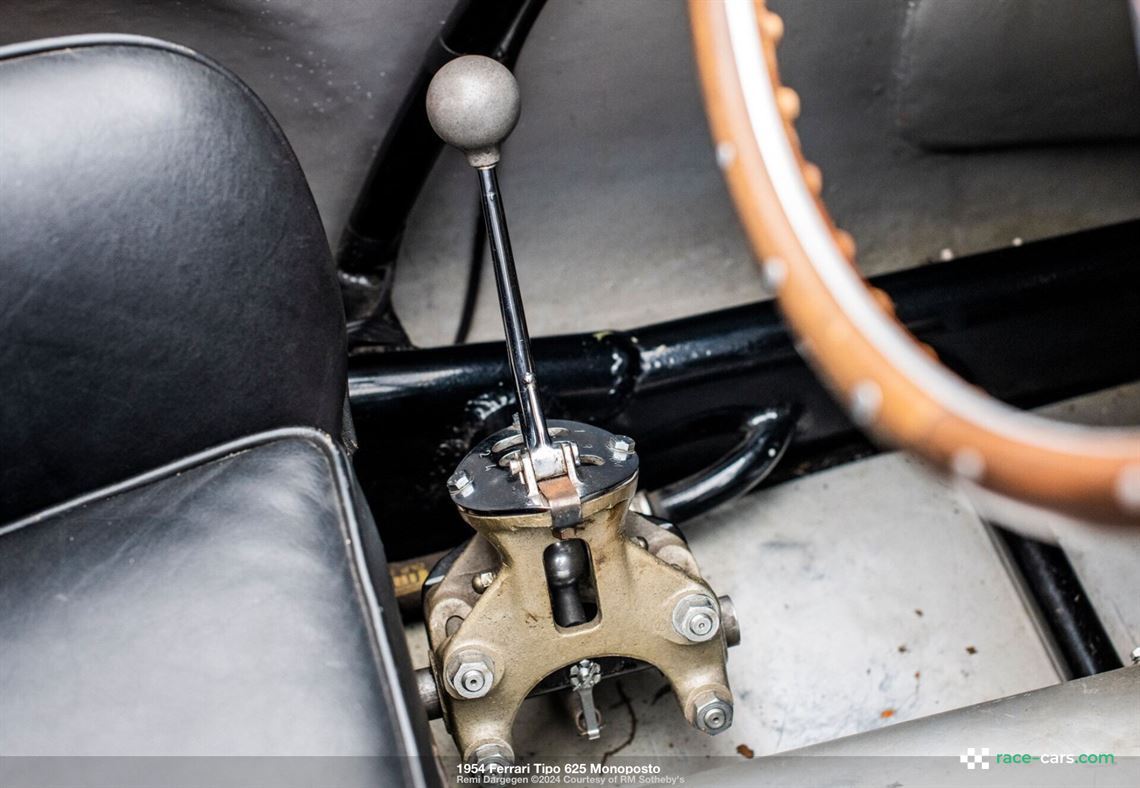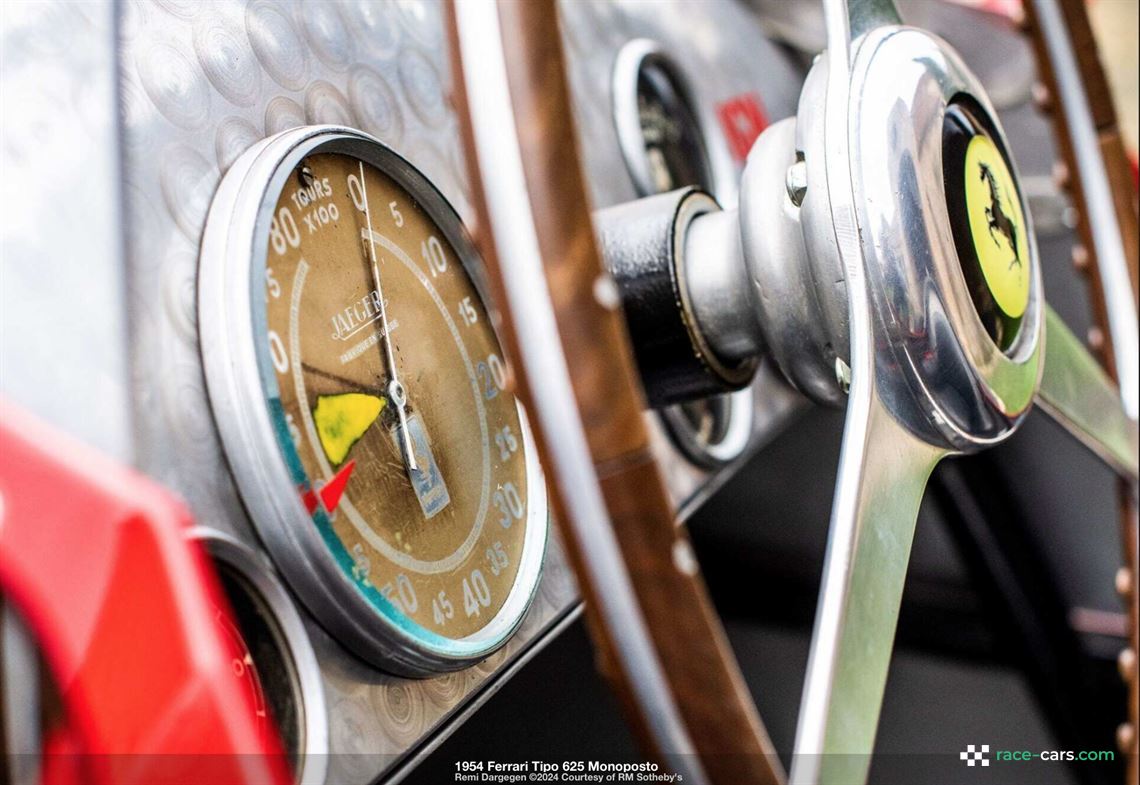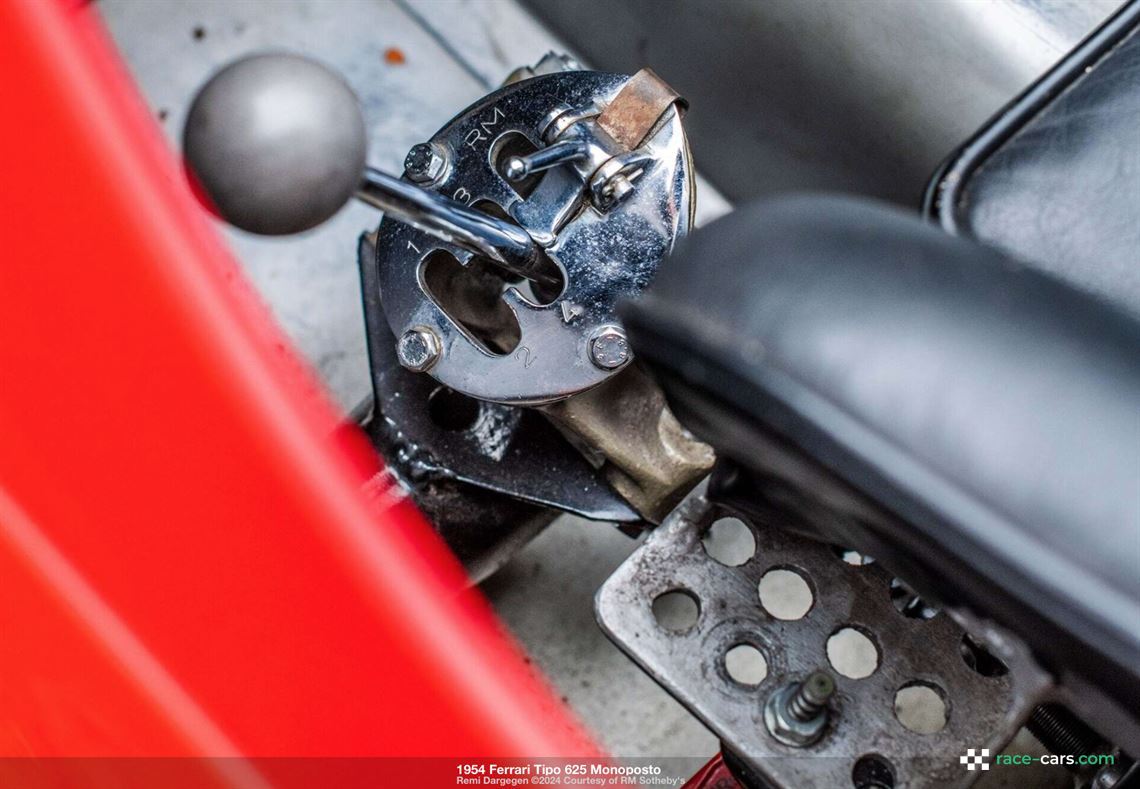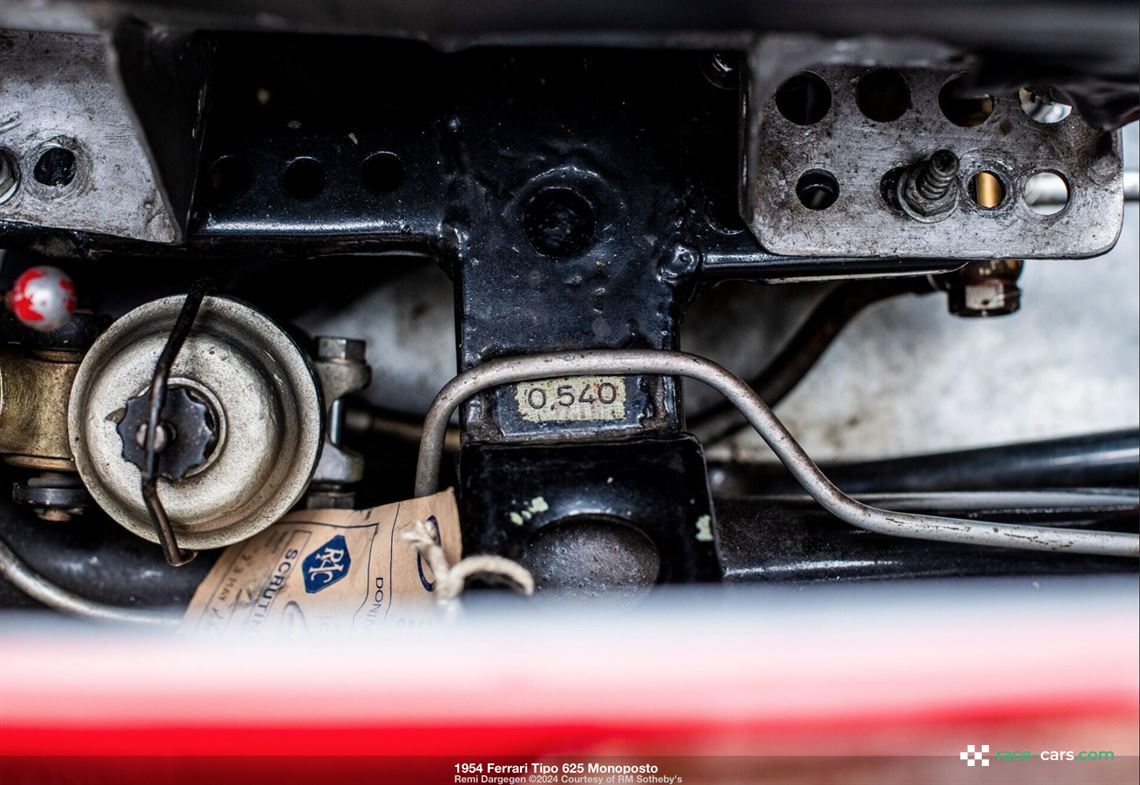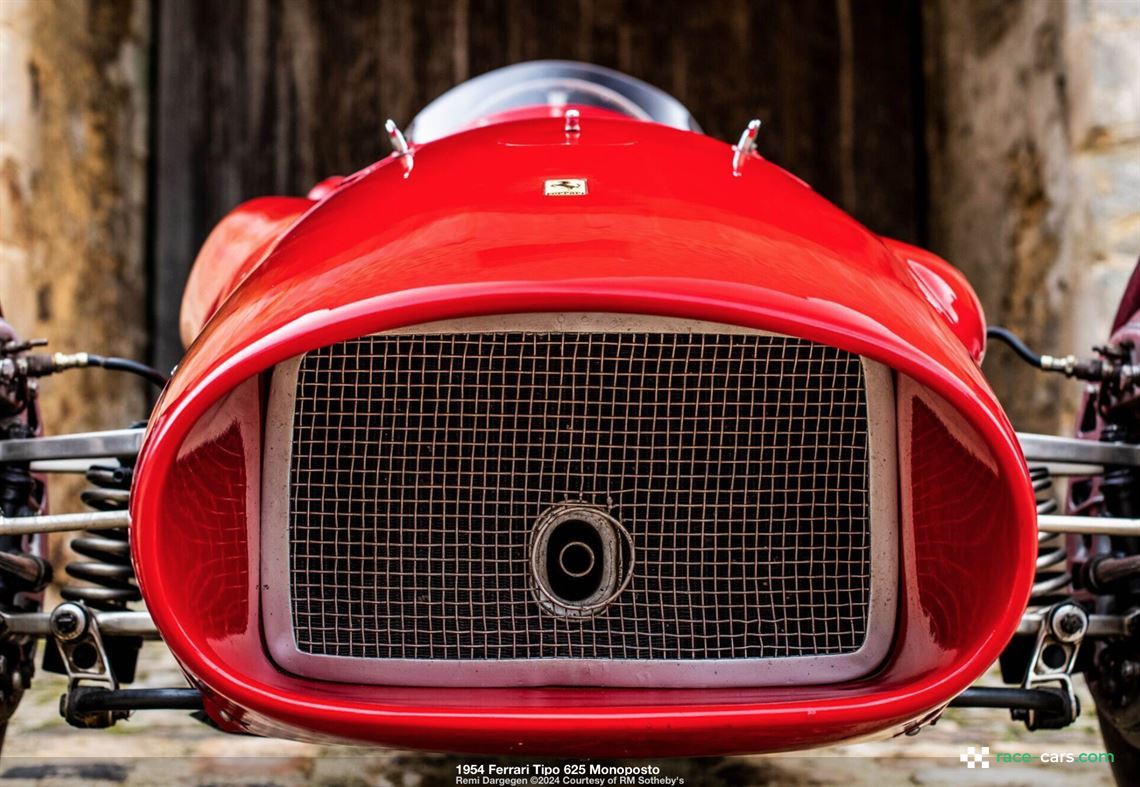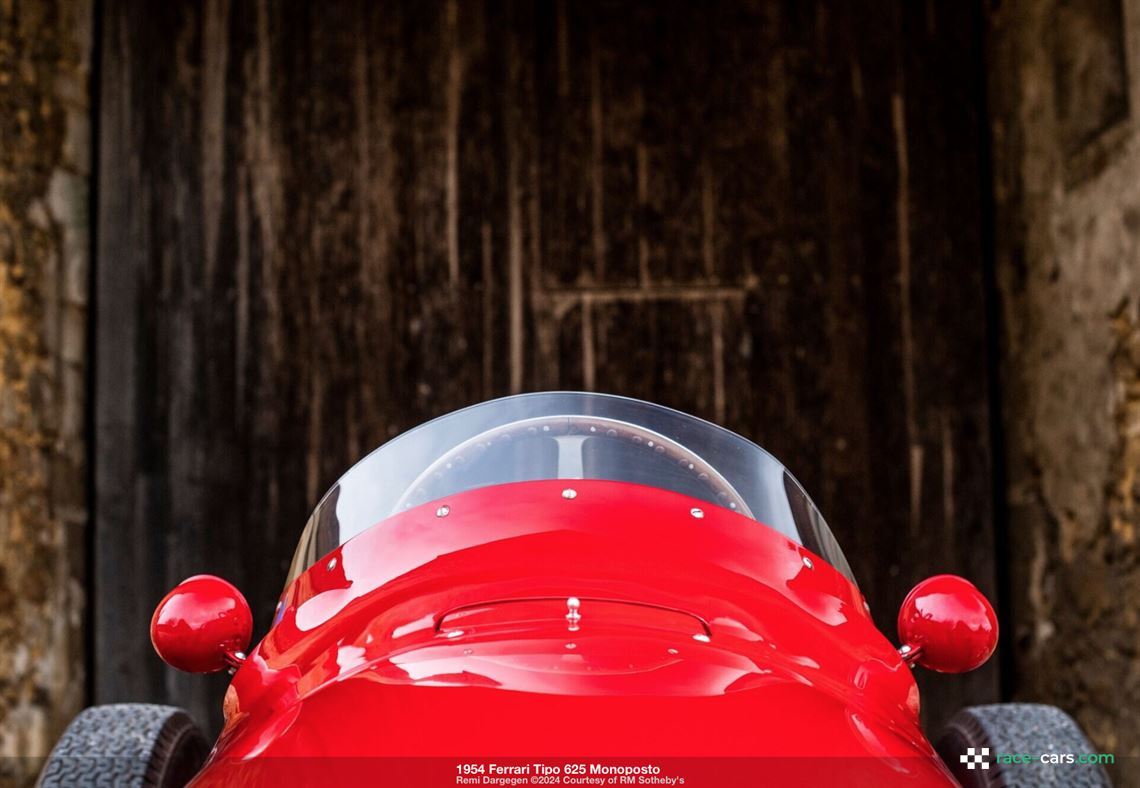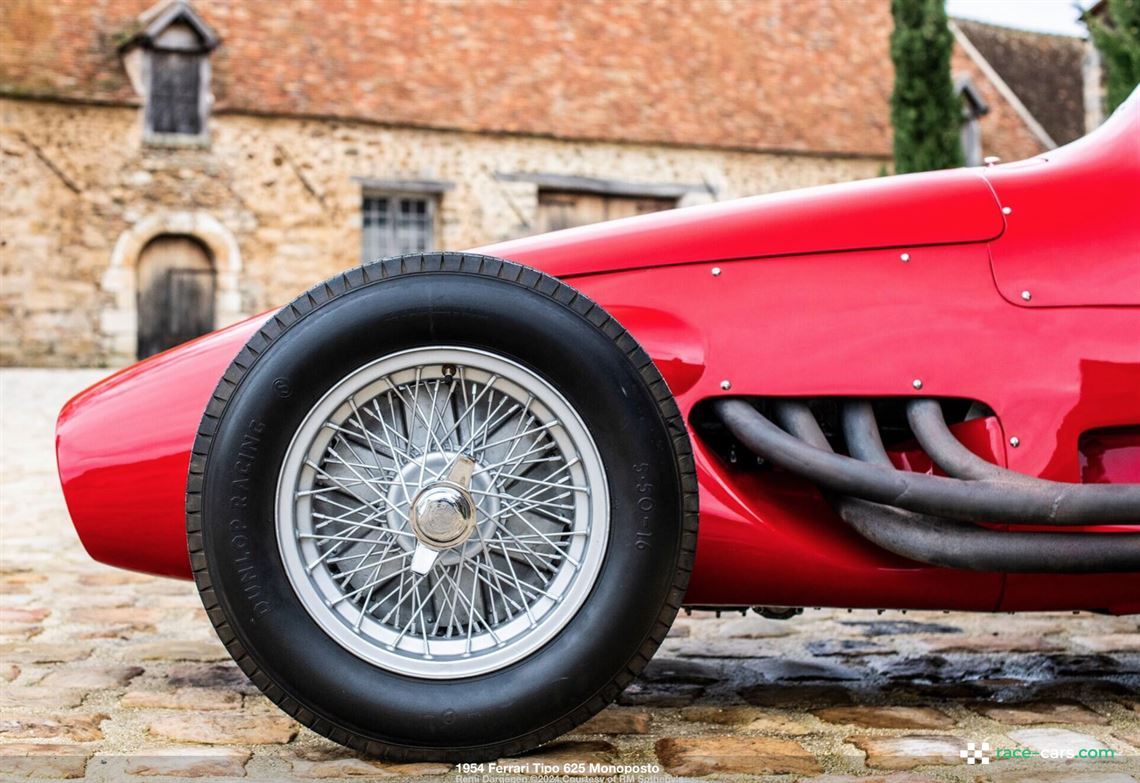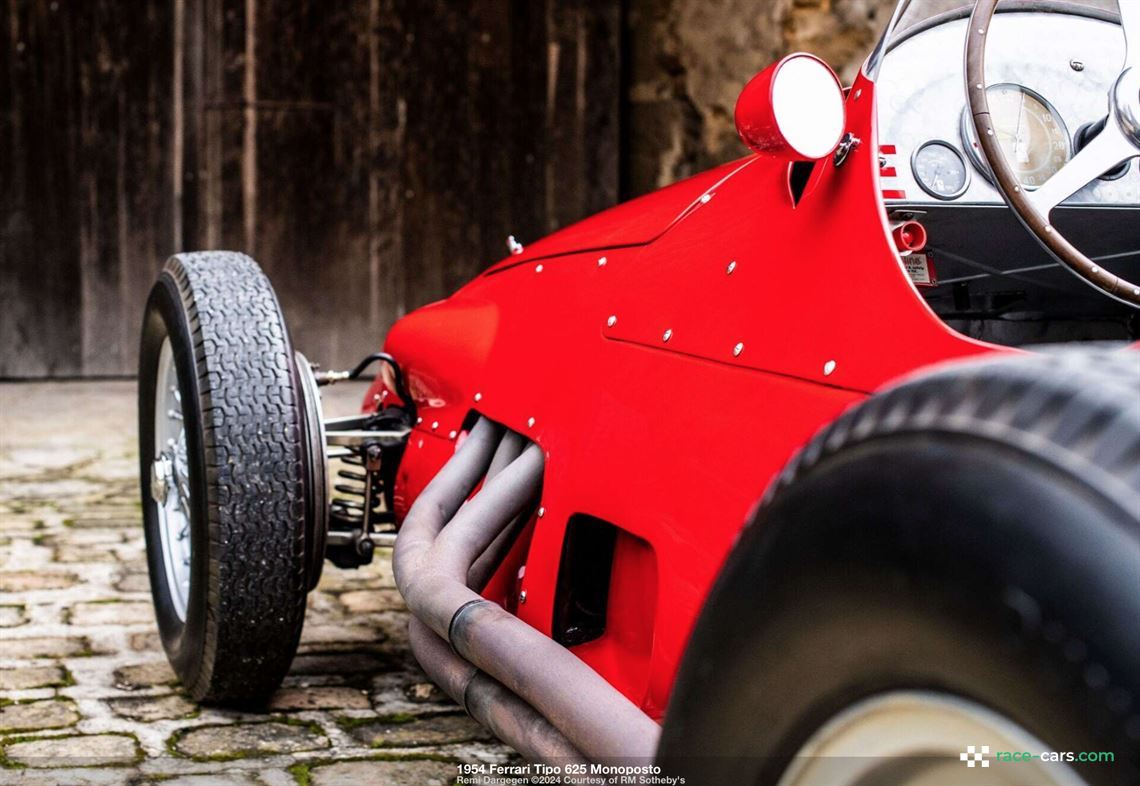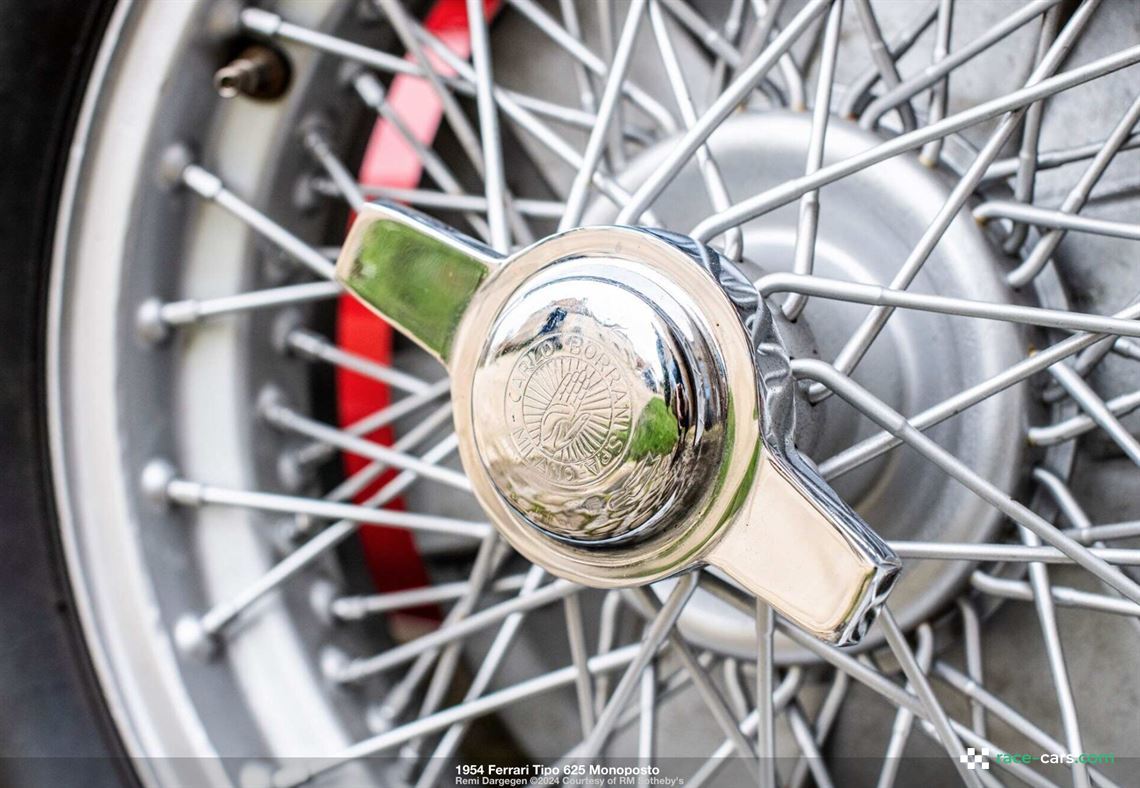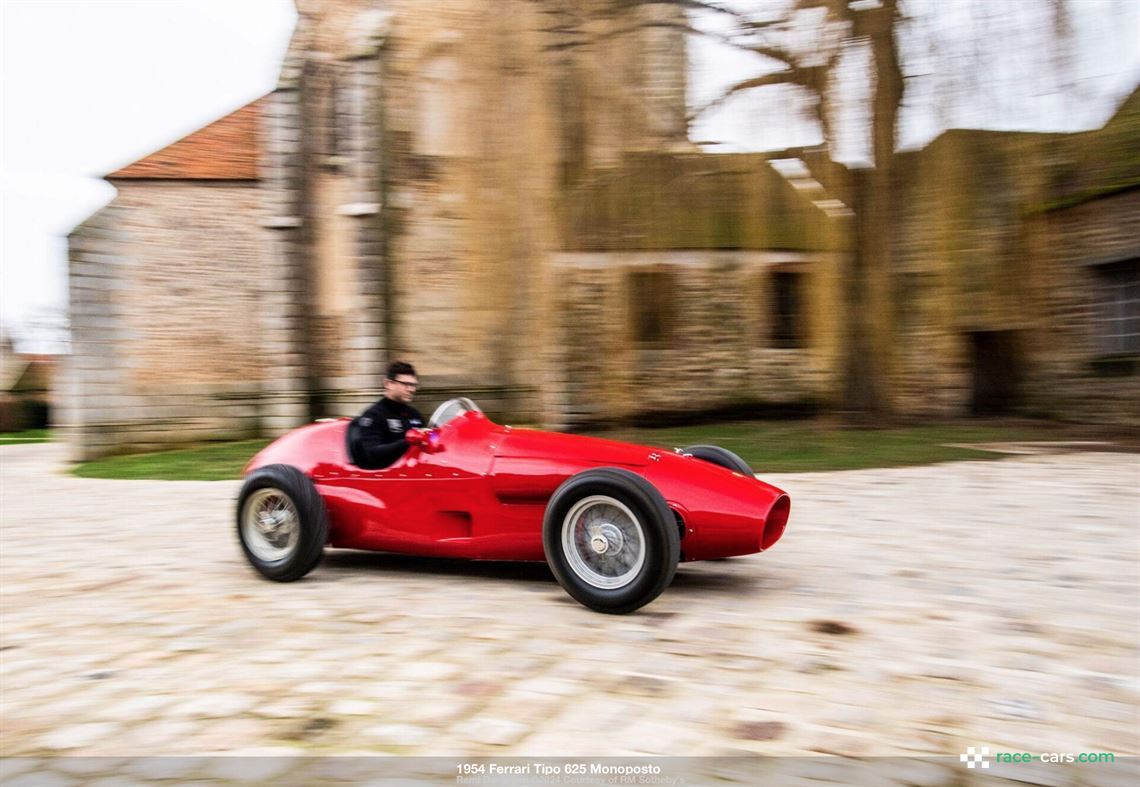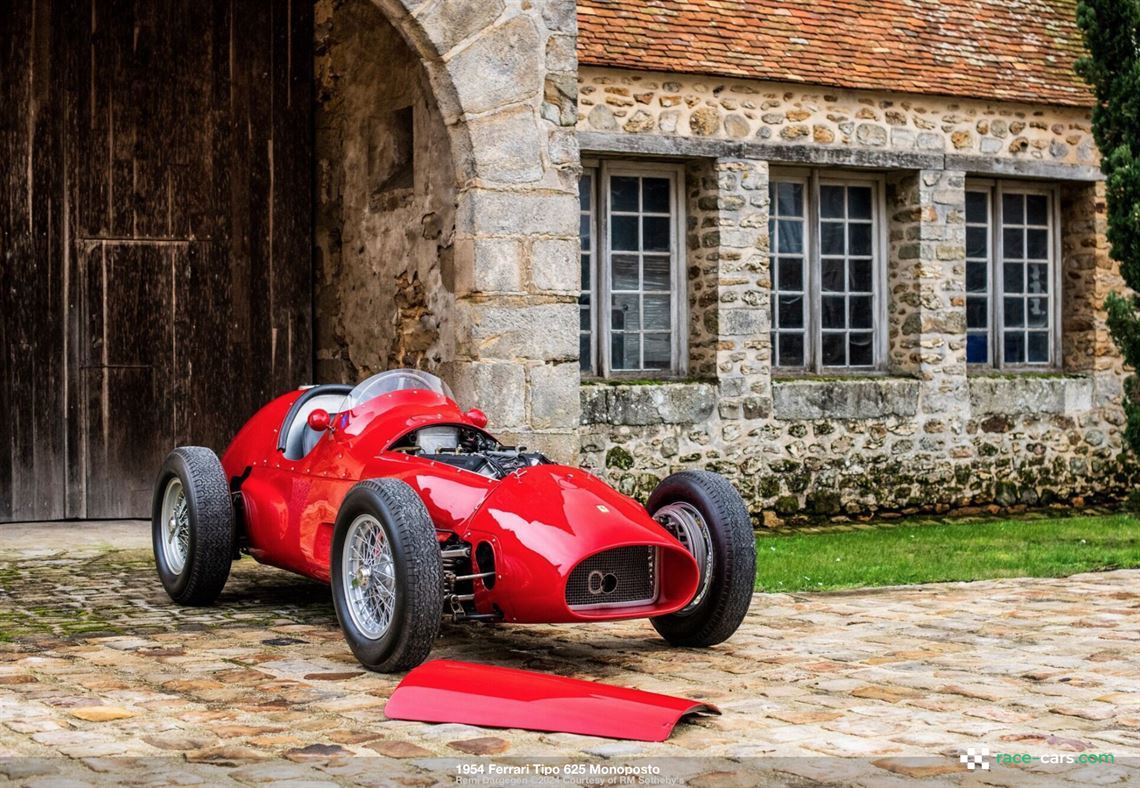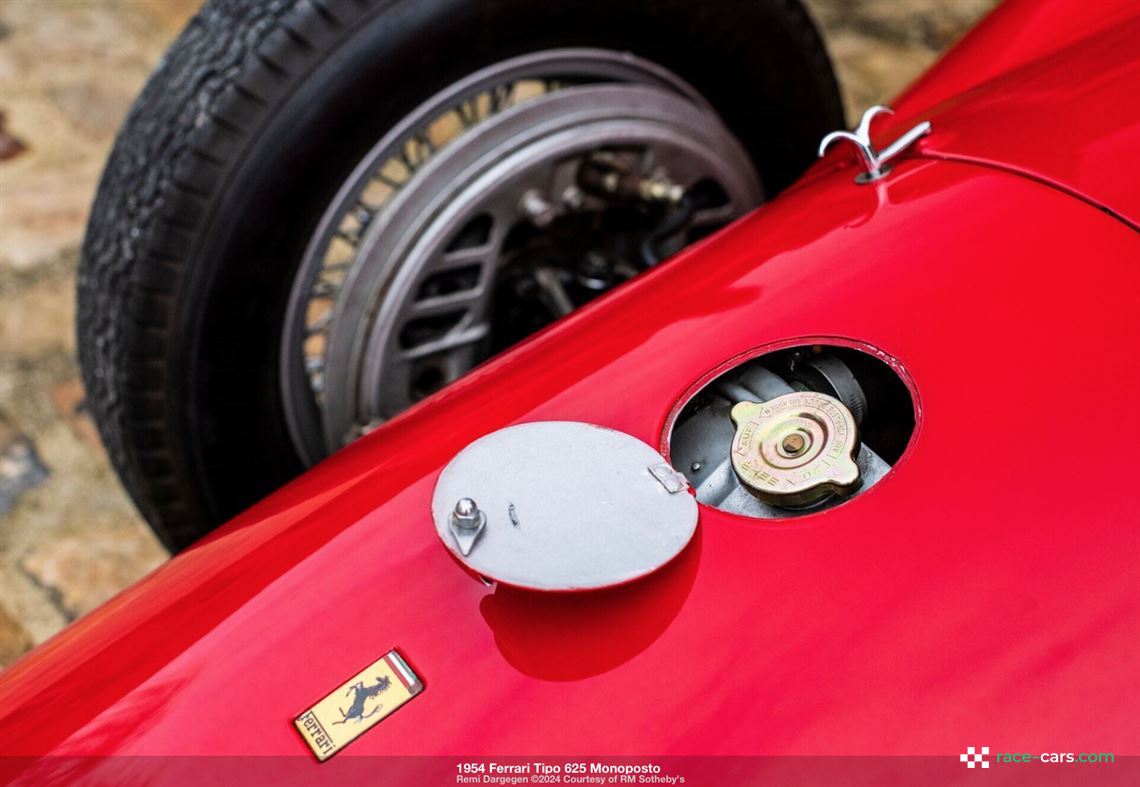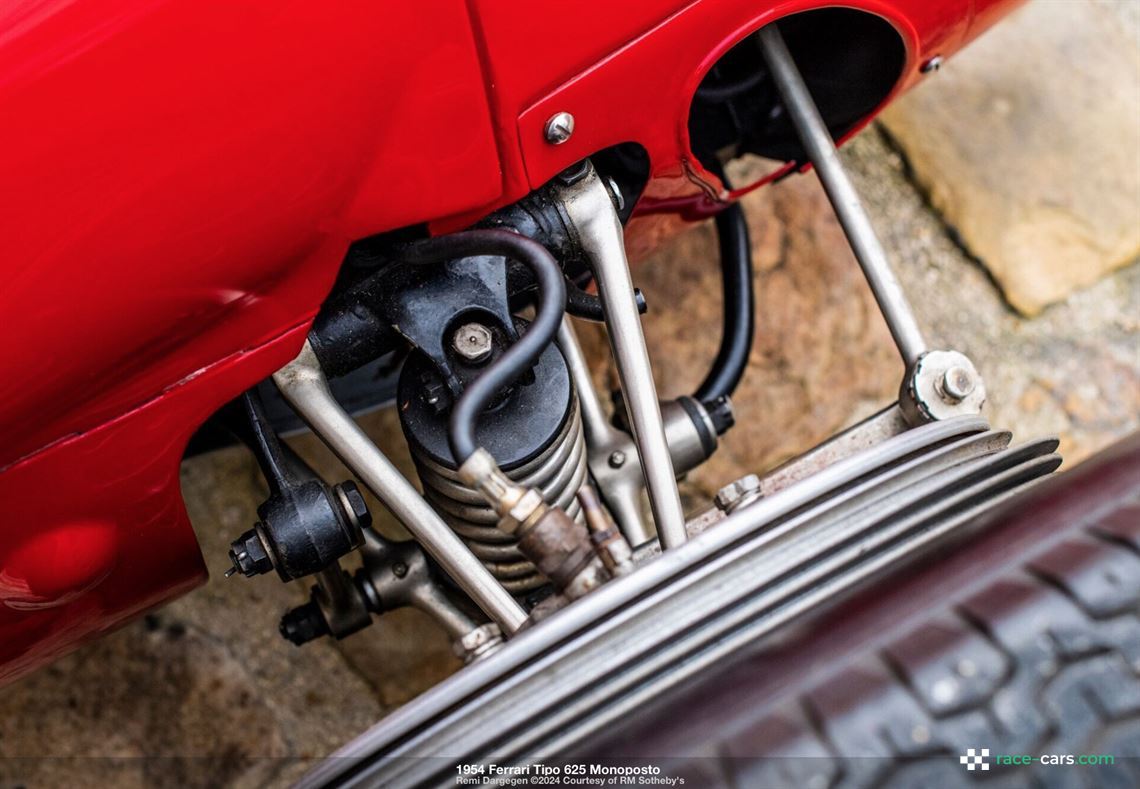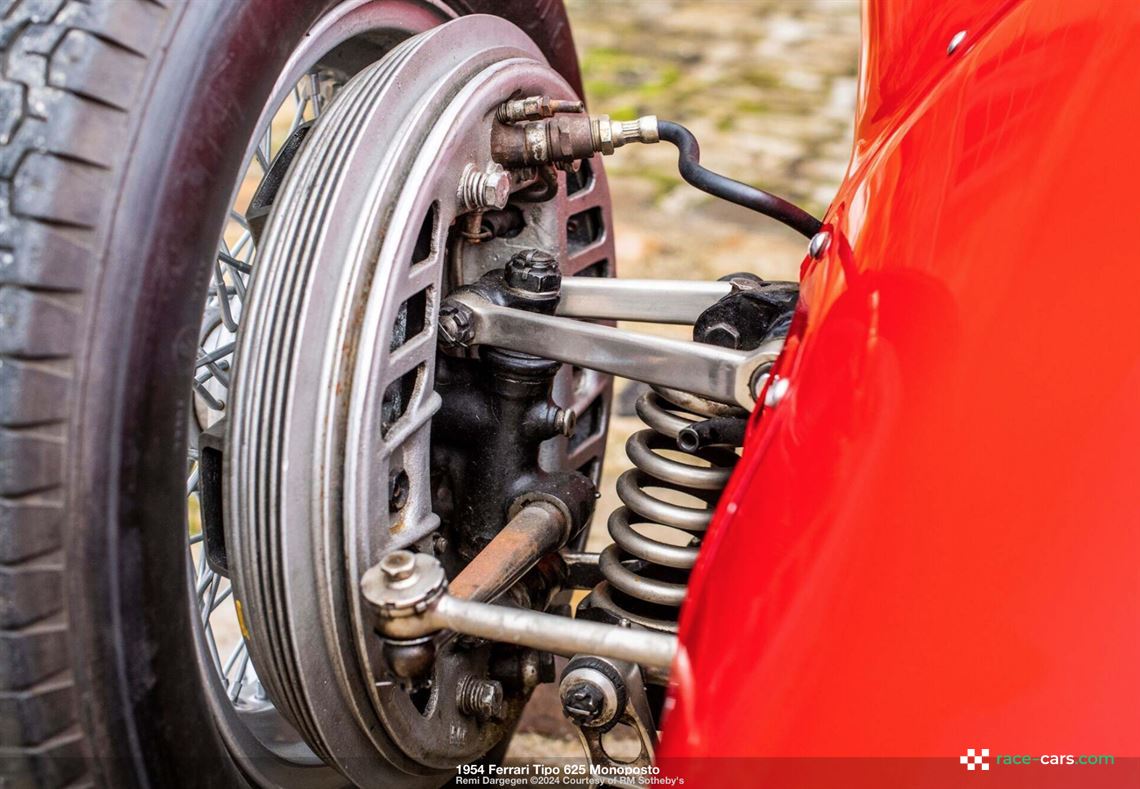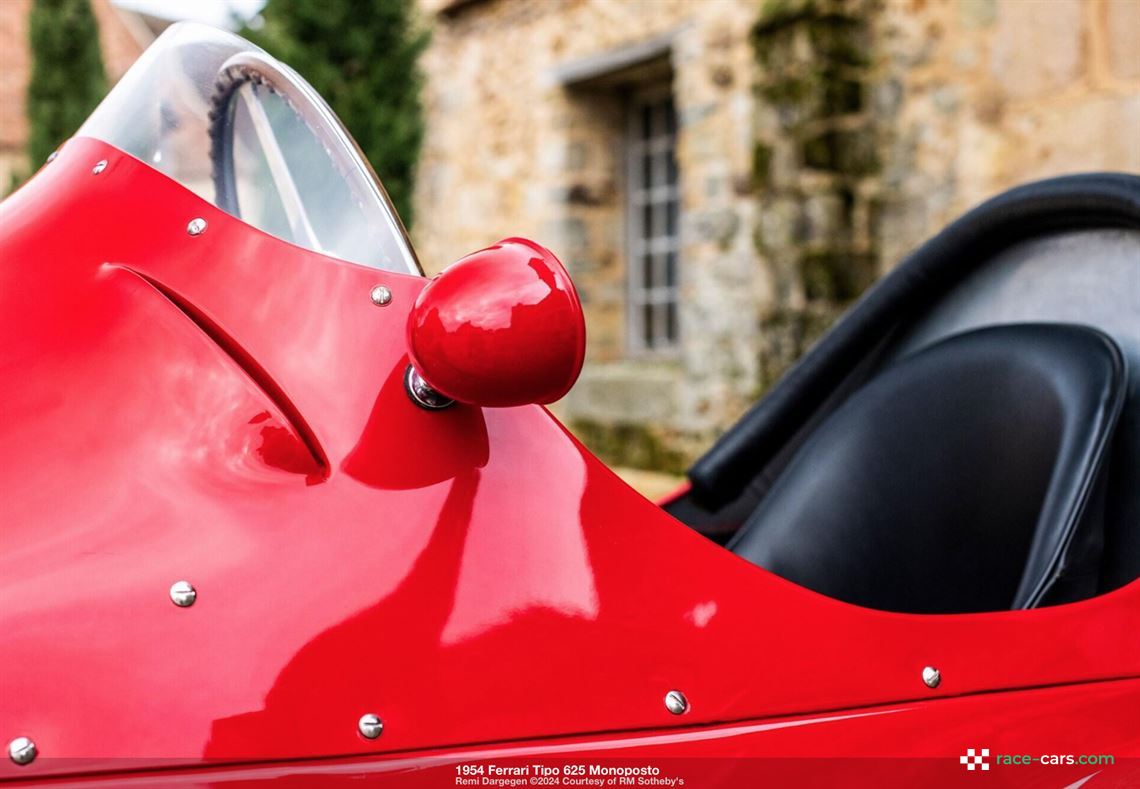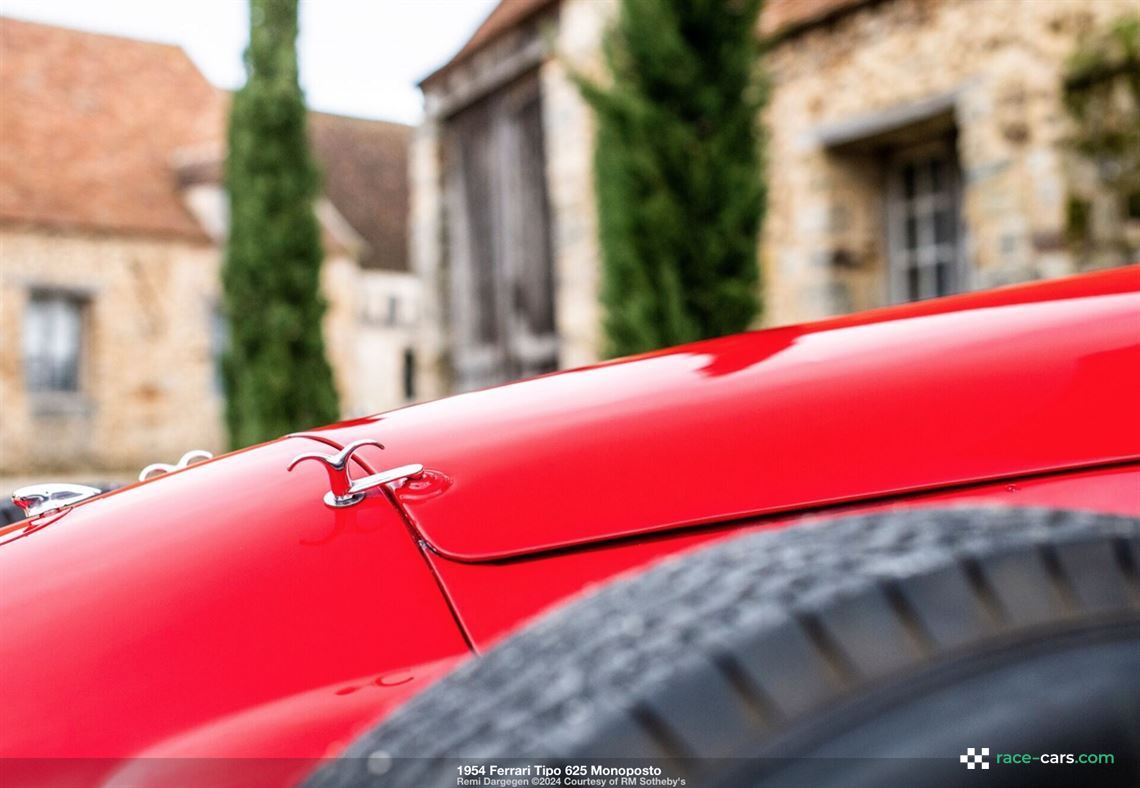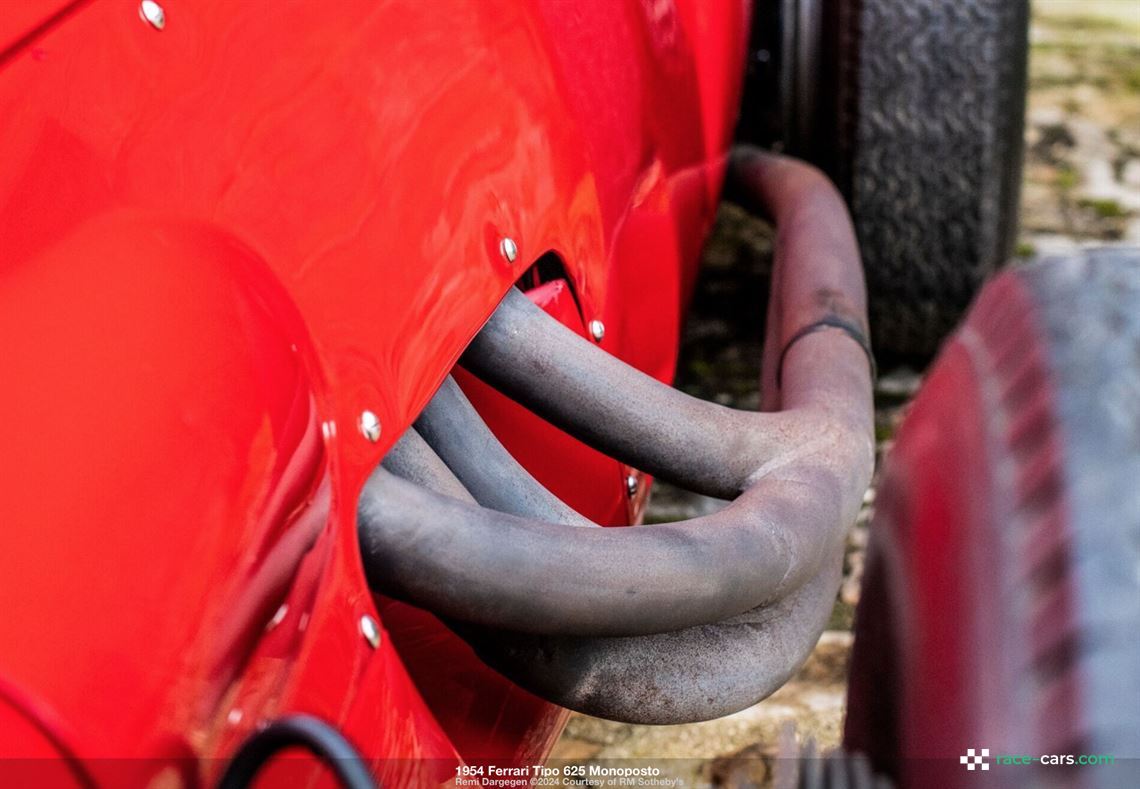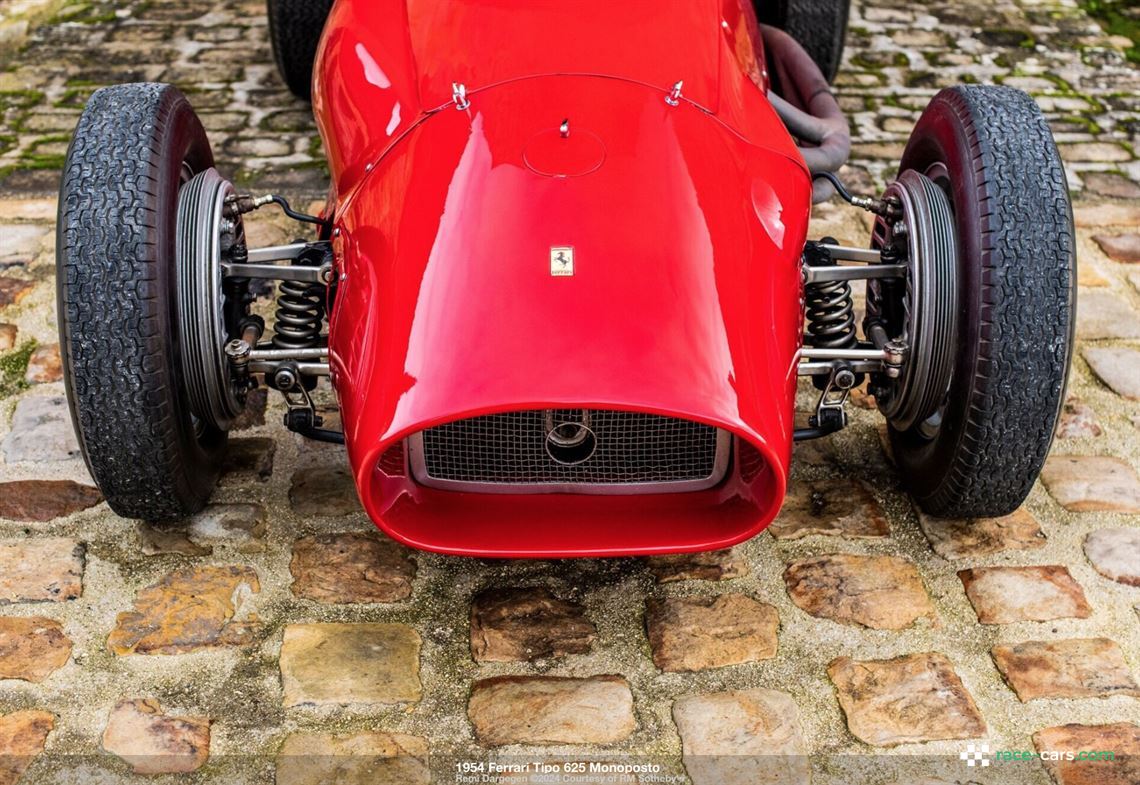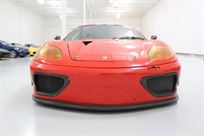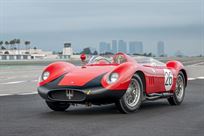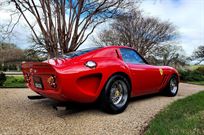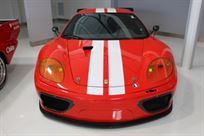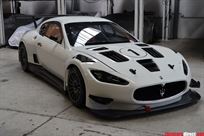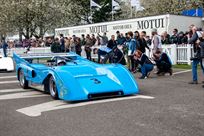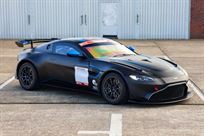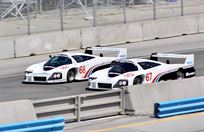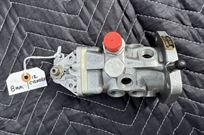$ POR
1954 Ferrari Tipo 625 Monoposto
Description:
1954 Ferrari Tipo 625 Monoposto.
On Display at Salon Rétromobile
- Ultra-rare early 1950s Ferrari Formula One example
- Sister car to Ferrari’s first World Championship-winning car, the extremely successful 500 F2, which took Alberto Ascari to back-to-back World Championships in 1952 and 1953
- Factory-upgraded to 625 F1 specifications in early 1954
- The first Ferrari campaigned by the Belgian national team Ecurie Francorchamps
- The only Ferrari monoposto ever raced by the legendary Marquis Alfonso de Portago
- Retained for over 15 years in the prestigious Bardinon Mas du Clos Collection
- Matching-numbers engine example recently emerging from over 20 years of single ownership
- Documented with Ferrari Classiche inspection report and history by Marcel Massini
“CICCIO” ASCARI AND THE RISE OF FORMULA TWO
1952 and 1953 were watershed years for Scuderia Ferrari, notable not only for what the team was able to achieve, but also the surrounding circumstances. By the start of the 1952 season, the once-formidable Alfa Corse team had faded, and the British-based BRM remained the only credible challenge to an expected romp by Maranello. When BRM withdrew from competition early in the season, the FIA had little choice but to cancel Formula One altogether for the foreseeable future. Setting its sights on a new formula to commence in 1954, the FIA elevated Formula Two as the determining series for the World Drivers’ Championship for the years 1952 and 1953, making Formula Two the highest level of racing for those two years.
Enzo Ferrari was well prepared for this eventuality, for by late 1951 Maranello was already testing a new naturally aspirated 2-liter inline-four-cylinder engine in monoposto form, with very promising results. Chief engineer Aurelio Lampredi had steadily advanced the concepts of simplicity and reliability, and his latest engine was a masterful study in these qualities, featuring a 65% reduction in moving parts and weighing 92.8 pounds less than the outgoing Colombo-designed Tipo 166 V-12. Featuring dry-sump lubrication, the new Tipo 500 engine was ignited by dual sparkplugs powered by twin magnetos and fed by two twin-choke Weber carburetors, combining to develop an impressive 170 horsepower—an improvement of 15 horsepower over the outgoing Tipo 166. In short, the inline-four was lighter, more reliable, and more powerful than its predecessor.
The new 500 engine was mated to a four-speed transaxle and dropped into an equally simplified and reliable short-wheelbase chassis of 2,160 millimeters, equipped with independent double-wishbone front suspension, a De Dion rear axle, and capable drum brakes, all clothed in minimalist monoposto coachwork. Weighing a svelte 1,235 pounds, the new 500 F2 had a top speed of over 149 mph, making it a clear favorite among Formula Two competitors.
The beloved Alberto “Ciccio” Ascari, one of the day’s most popular drivers, led a team consisting of Nino Farina, Piero Taruffi, and Luigi Villoresi, and during the next two years they established a dominance that has rarely been matched. During the 1952 and 1953 seasons the 500 F2 won an astounding 30 out of 33 races in which it participated, and Ascari became Ferrari’s first Drivers’ Champion—actually becoming a back-to-back Champion—while Farina and Taruffi finished 2nd and 3rd in Championship driver’s points in 1952.
Maranello built six of these remarkable factory team cars during the model’s two-year reign, all stamped with three-digit numbers ranging from 001 to 006. Midway through the first season the company began offering privateer versions to preferred racing clients, and five such cars were built with standard even-numbered competition chassis numbers. Referred to as “starlet” cars in Italy, these privateer examples performed nearly as well as the factory cars, exemplified by Rudi Fischer’s 4th-place standing in 1952 Championship driver’s points.
Within a couple years the factory had upgraded most of the 500 F2 examples with 2.5-liter engines, effectively rebranding them as 625 F1 monopostos, and these cars joined the new 553 Squalo in 1954 Formula One competition (only to be outclassed by the sensational Juan Manuel Fangio, who drove Maseratis and the revolutionary Mercedes-Benz W196 to the 1954 Drivers’ Championship). In addition to being the cornerstone of two of the Scuderia’s most successful years ever, the 500 F2/625 F1 examples were the forerunners of the inline-four-cylinder sports cars that performed so admirably during the mid-1950s, including the 500 Mondial, the 750 Monza, and the 500 and 625 TRC Spiders.
CHASSIS NUMBER 0540
This incredibly rare early Formula One car began life as chassis number 0208F, the fourth of the five starlet 500 F2 examples. Purchased new by the future preferred client and Belgian marque distributor Jacques Swaters, the car was the first Ferrari ever raced by Ecurie Francorchamps. The 500 was campaigned in 17 events during 1952 and 1953, twice finishing as high as 2nd place (at the 1953 Helsinki Grand Prix and the 1953 GP Frontiers) and notching an impressive overall victory at the 1953 AVUS Grand Prix. For 1954, the Formula One championship had shifted back to F1 qualifications, and as a result most of the surviving 500 F2 cars were sent back to Ferrari and upgraded to 625 F1 specifications in order to participate in the various F1 events; such was the case for this car as part of its rebuild at Ferrari. Ecurie Francorchamps then ran the car at seven more races during 1954 before trading the car back to the factory for a 750 Monza.
All of the surviving Scuderia Ferrari Works 500 F2 cars were re-numbered from their three-digit Works chassis numbers to four-digit even-numbered cars and resold to privateers in 1954 in 625 F1 specification. This car followed a similar path and, according to the research of Ferrari Historian Marcel Massini, after being renumbered as chassis number 0540, the 625 F1 was sold to the legendary Marquis Alfonso de Portago in early 1955. Portago campaigned 0540 in four Formula One events during 1955, at Turin, Pau, Bordeaux, and Silverstone, finishing as high as 8th place at the Pau Grand Prix in April.
In late 1955 the Ferrari was purchased by the celebrated British engineer Donald Healey. Five years later he sold the 625 to fellow Briton Ian Sievewright, who campaigned the car once at the Shelsley Walsh national speed hillclimb in August 1964 before selling it in 1967 to the most prestigious Ferrari collection ever assembled, Pierre Bardinon’s Mas du Clos collection. After undergoing a partial restoration in the late 1960s, the car remained with Bardinon through the 1970s, and he sold the 625 in 1983 to Jacques Setton of Paris. Setton retained possession for 10 years before selling the car through Uwe Meissner’s Modena Motorsports to Pierre Fandel of Bitburg, Germany. Mr. Fandel then ran the Ferrari for three consecutive years (1994 through 1996) at the Meissner-Fandel meeting at the Nürburgring, the final year of which the car was piloted by former factory team driver Maurice Trintignant (who had won the 1955 Monaco Grand Prix in one of the sister cars).
Acquired by Carlos Monteverde in the late 1990s, the 625 was sold in 1998 to David Vine of Plymouth, England, and he enjoyed the car at various vintage events including the Goodwood Festival of Speed, the Goodwood Revival, the Monaco historic races, and Coy’s Historic Race Festival. In December 2000 the rare Ferrari was purchased by a collector based in Cologne, Germany, and he stewarded the car through 21 years of fastidious care, contributing to its current impressive state. In April 2022 the 625 was inspected by Ferrari Classiche, and the inspection report on file indicates that the car is stamped with the correct chassis and engine numbers, and that the gearbox is the correct type. It is rare enough to have an opportunity to purchase one of these extraordinary early Ferrari Formula One cars, and a car of this level of originality should be at the top of the most discerning collectors' lists.
Representing one of the most dominant periods in Scuderia Ferrari history, including Ferrari’s first Drivers’ World Championship, and claiming important ownership provenance and racing use by Jacques Swaters’ Ecurie Francorchamps and the legendary Marquis de Portago, this extremely rare 625 F1 would make a fabulous addition to any collection. It is eligible for the some of the most exclusive vintage racing events worldwide, and can expect a warm welcome at premiere concours d’elegance. It invites admirers to indulge in its brilliant engineering mandate, fostered by the genius of Aurelio Lampredi, and employed to such overwhelming success by the luminary Alberto Ascari.
Website:
https://rmsothebys.com/en/home/private-sales/r5479-1954-ferrari-tipo-625-monoposto/1267029Keyword Search Terms:
1954 Ferrari Tipo 625 MonopostoDetails:
| Item Location: | On Display at Salon Rétromobile |
|---|---|
| Seller: |
information@rmsothebys.com Joined March 2022 |
|
RM Sotheby's Seller's other listings |
|
| Country: | United Kingdom |
| City: | Richmond |
| Phone: |
+44 (0) 20 7851 7070 |
| Condition | Used |
| Trade or Private: | Trade |
| Price: |
$POR
Make an Offer |
| Added: | 01/31/2024 |
| Views: | 10419 |
|
Share by Email Print page Report Sold |
|

